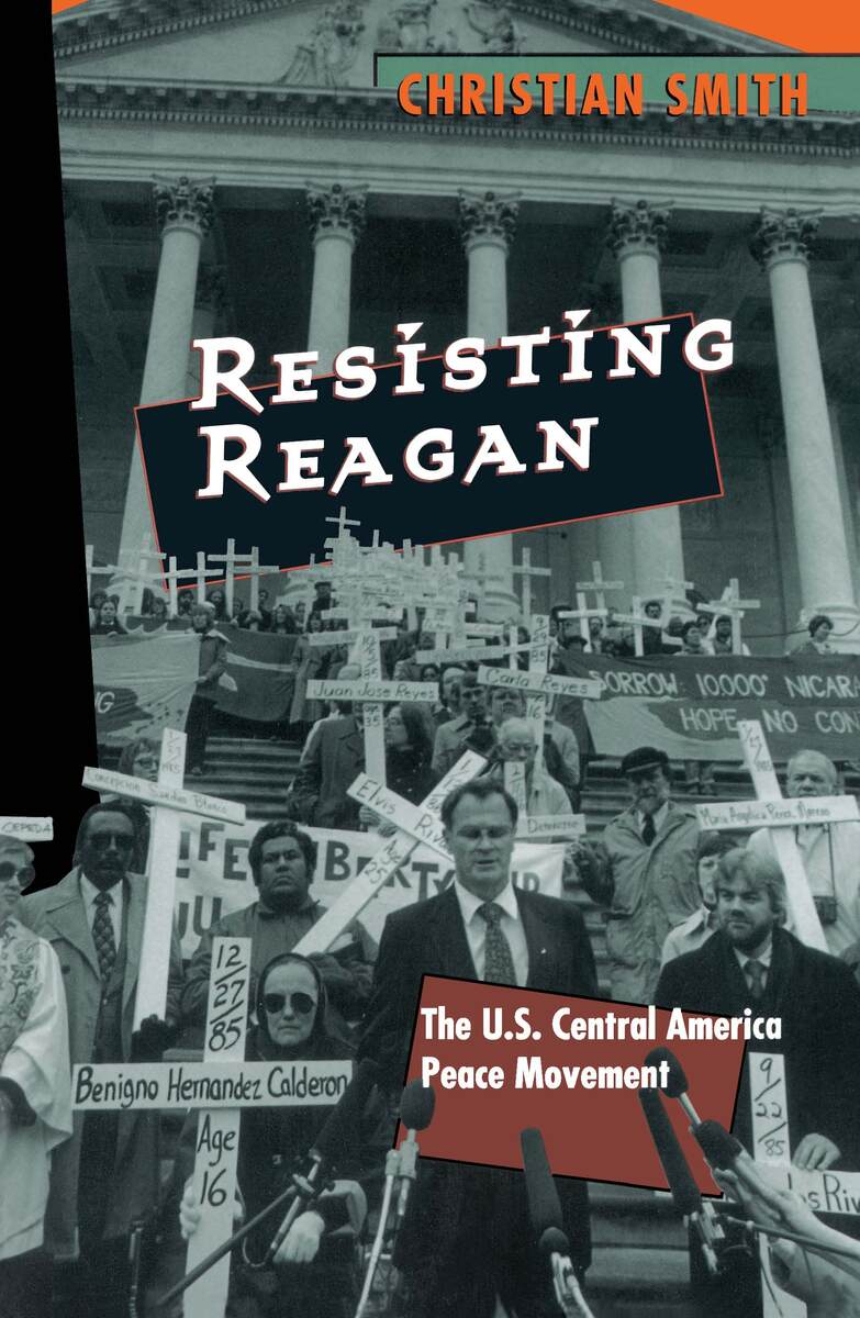Resisting Reagan
The U.S. Central America Peace Movement
A comprehensive analysis of the U.S. Central America peace movement, Resisting Reagan explains why more than one hundred thousand U.S. citizens marched in the streets, illegally housed refugees, traveled to Central American war zones, committed civil disobedience, and hounded their political representatives to contest the Reagan administration’s policy of sponsoring wars in Nicaragua and El Salvador.
Focusing on the movement’s three most important national campaigns—Witness for Peace, Sanctuary, and the Pledge of Resistance—this book demonstrates the centrality of morality as a political motivator, highlights the importance of political opportunities in movement outcomes, and examines the social structuring of insurgent consciousness. Based on extensive surveys, interviews, and research, Resisting Reagan makes significant contributions to our understanding of the formation of individual activist identities, of national movement dynamics, and of religious resources for political activism.
Focusing on the movement’s three most important national campaigns—Witness for Peace, Sanctuary, and the Pledge of Resistance—this book demonstrates the centrality of morality as a political motivator, highlights the importance of political opportunities in movement outcomes, and examines the social structuring of insurgent consciousness. Based on extensive surveys, interviews, and research, Resisting Reagan makes significant contributions to our understanding of the formation of individual activist identities, of national movement dynamics, and of religious resources for political activism.
484 pages | 12 halftones, 1 map, 21 tables | 6 x 9 | © 1996
History: American History
Political Science: Diplomacy, Foreign Policy, and International Relations
Sociology: General Sociology
Table of Contents
List of Tables and Figures
Acknowledgments
Acronyms
Introduction
1: The Sources of Central American Unrest
2: United States Intervention
3: Low-Intensity Warfare
4: Launching the Peace Movement
5: Grasping the Big Picture
6: The Social Structure of Moral Outrage
7: The Individual Activists
8: Negotiating Strategies and Collective Identity
9: Fighting Battles of Public Discourse
10: Facing Harassment and Repression
11: Problems for Protesters Closer to Home
12: The Movement’s Demise
13: What Did the Movement Achieve?
14: Lessons for Social-Movement Theory
Appendix: The Distribution and Activities of Central America Peace
Movement Organizations
Notes
Bibliography
Index
Acknowledgments
Acronyms
Introduction
1: The Sources of Central American Unrest
2: United States Intervention
3: Low-Intensity Warfare
4: Launching the Peace Movement
5: Grasping the Big Picture
6: The Social Structure of Moral Outrage
7: The Individual Activists
8: Negotiating Strategies and Collective Identity
9: Fighting Battles of Public Discourse
10: Facing Harassment and Repression
11: Problems for Protesters Closer to Home
12: The Movement’s Demise
13: What Did the Movement Achieve?
14: Lessons for Social-Movement Theory
Appendix: The Distribution and Activities of Central America Peace
Movement Organizations
Notes
Bibliography
Index
Awards
Gustavus Myers Ctr/Study of Human Rights: Gustavus Myers Center Outstanding Book Award
Won
